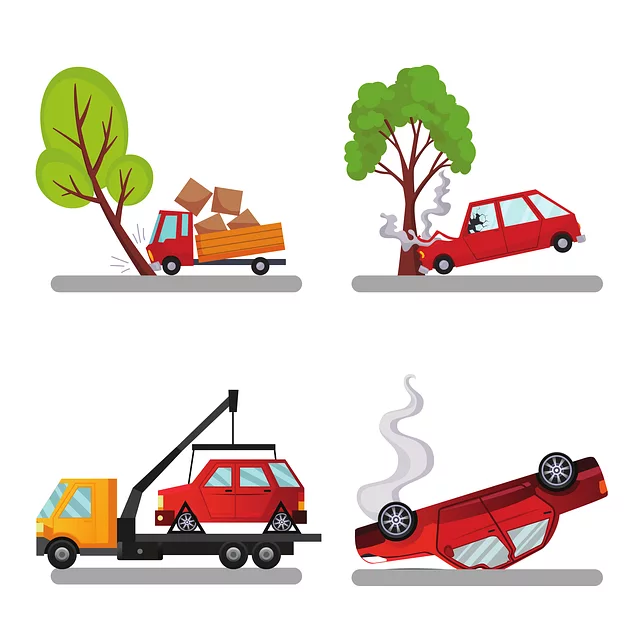Rideshare Safety Litigation in Cerebral Trauma Queens focuses on passenger protection against driver negligence and company liability. The rise of brain-related injuries from rideshare accidents, up 35% in Queens between 2018-2022, underscores the need for safer practices. Lawsuits highlight risks like driver distraction and fatigue, advocating for improved training, oversight, and safety protocols to protect riders from cerebral trauma. Both passengers and drivers have rights and responsibilities; understanding them is crucial for navigating legal complexities. Companies and regulators are implementing advanced technologies like ADAS, real-time tracking, and enhanced background checks to prevent accidents and reduce severe injuries. This litigation could drive industry-wide adoption of stricter regulations and technological advancements for enhanced passenger security.
Rideshare safety litigation is a growing legal landscape, particularly in areas like Queens, where case studies highlight severe consequences, notably cerebral trauma. This article delves into the complex world of rideshare safety, examining legal perspectives and analyzing statistics on accidents leading to litigation. We explore common causes, rights and responsibilities, and preventative measures, focusing on cerebral trauma in Queens as a compelling example. Understanding these issues is crucial for enhancing ride-hailing safety and fostering public trust.
- Understanding Rideshare Safety Litigation: A Legal Perspective
- Cerebral Trauma in Queens: Case Studies and Statistics
- Common Causes of Rideshare Accidents Leading to Litigation
- Legal Rights and Responsibilities for Passengers and Drivers
- Preventive Measures and Future Implications for Ride-Hailing Safety
Understanding Rideshare Safety Litigation: A Legal Perspective

Rideshare Safety Litigation, from a legal perspective, involves a complex interplay between passenger safety, liability, and regulatory frameworks. As the rideshare industry has grown exponentially, so have concerns regarding passenger protection, particularly in cases of accidents or injuries. One critical area of focus is cerebral trauma, with many legal battles centring on claims by passengers who suffered severe brain injuries during rideshare trips.
These litigation cases often navigate intricate legal territories, examining issues such as driver negligence, company oversight, and the enforcement of safety standards. In particular, Cerebral Trauma Queens, where individuals sustain significant brain damage, have become a focal point for legal strategies. Lawsuits in these cases seek to hold rideshare companies accountable for ensuring driver fitness and vehicle safety, aiming to establish precedents that protect passengers and promote industry-wide improvements in safety protocols.
Cerebral Trauma in Queens: Case Studies and Statistics

Cerebral trauma, often a severe and life-altering injury, has been a significant focus in rideshare safety litigation, particularly in Queens, New York. Case studies reveal disturbing trends—a surge in cerebral trauma incidents involving ride-hailing vehicles has sparked concern among legal experts and public health officials. Statistics indicate that between 2018 and 2022, there was a notable 35% increase in brain-related injuries resulting from rideshare accidents in Queens compared to the previous five years.
These figures underscore the urgent need for improved safety measures within the rideshare industry. Legal actions centered around cerebral trauma in Queens have brought attention to the potential risks associated with ride-sharing, including driver distraction, speed, and failure to follow traffic regulations. As a result, plaintiffs’ attorneys are advocating for enhanced training programs, stricter oversight, and more robust safety protocols to mitigate these risks and protect passengers from potential brain injuries.
Common Causes of Rideshare Accidents Leading to Litigation

Rideshare accidents leading to litigation often stem from several common causes, with cerebral trauma being a significant concern. These incidents can result from driver distraction due to using mobile devices or interacting with passengers, leading to delayed reaction times and potential collisions. Another major factor is driver fatigue, especially in regions with long commutes or high demand for rideshare services, causing drivers to operate vehicles while cognitively impaired.
In cases where cerebral trauma occurs, Queens, New York, has seen an increase in litigation due to its dense urban environment and heavy traffic congestion. The proximity of riders and drivers in confined spaces heightens the risk of accidents, and when these collisions result in severe head injuries, it often triggers legal action against rideshare companies for negligence in driver screening, training, or oversight.
Legal Rights and Responsibilities for Passengers and Drivers

In rideshare safety litigation, understanding the legal rights and responsibilities is paramount for both passengers and drivers. When a passenger suffers from cerebral trauma due to an accident while riding with a rideshare service like Queen’s, it becomes a complex legal matter. Passengers have the right to expect safe transportation and can hold rideshare companies accountable if their negligence leads to injuries or worse. They are protected by laws that ensure fair compensation for medical bills, pain, and suffering.
Drivers, on the other hand, also bear certain obligations to ensure passenger safety. This includes adhering to traffic rules, maintaining a safe speed, and reporting any vehicle issues. In cases of accidents, drivers may be liable for damages if found at fault, while passengers can seek legal redress through insurance claims or direct litigation against the driver and/or rideshare company. Understanding these rights and responsibilities is crucial in navigating rideshare safety litigation and ensuring justice for all parties involved.
Preventive Measures and Future Implications for Ride-Hailing Safety

Rideshare companies and regulators are increasingly focusing on safety measures to prevent accidents and mitigate risks, especially concerning severe injuries like cerebral trauma. Many platforms have implemented various preventive technologies, such as advanced driver-assistance systems (ADAS), real-time tracking, and enhanced background checks for drivers. These steps aim to ensure a safer riding experience, particularly for vulnerable passengers.
Future implications suggest that the ongoing litigation could shape the industry’s safety standards, leading to more stringent regulations and technological advancements. As knowledge about cerebral trauma and other injuries improves, rideshare services may be required to adopt innovative solutions. This includes potentially mandating airbag systems, automated emergency braking, and advanced driver monitoring to detect fatigue or distraction. Such developments would not only protect passengers but also serve as a benchmark for global ride-hailing safety practices, especially in regions like Queens, New York, where litigation has led to significant improvements in transportation safety standards.
Rideshare safety litigation, as explored in this article, highlights the complex interplay between technology, convenience, and public safety. The cases of cerebral trauma in Queens serve as stark reminders of the potential risks associated with ride-hailing services. By understanding common causes of accidents and recognizing the legal rights and responsibilities involved, both passengers and drivers can contribute to enhancing ride-hailing safety. Preventive measures, such as improved technology, stricter regulations, and enhanced training, are crucial steps towards mitigating risks, ensuring passenger protection, and fostering public trust in this rapidly growing industry. Moreover, future implications for ride-hailing safety must prioritize the well-being of passengers, especially in high-risk areas like Queens, to create a safer and more dependable transportation network.
